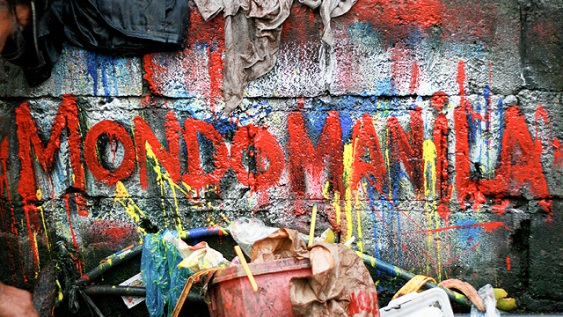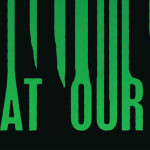MONDOMANILA
by Ariel Esteban Cayer
——
“Manila is a ghastly and weird city. It just f****** smelled of cockroaches. Rats were everywhere. There’s no sewage system and people have nothing there. People with no arms, no legs, no eyes, no teeth.” – Claire Danes
It is on these harsh words (that caused a controversy in 1998 at the time Danes was starring in Brokedown Palace) that begins Mondomanila, Or: How I Fixed My Hair after A Rather Long Journey, an unconventional adaptation of Norman Wilwayco’s 2002 novel of the same name; a film that wears its city’s weirdness, uniqueness and crudeness on its sleeve like a badge of honor. Appropriately named after Gualtiero Jacopetti & Paolo Cavara’s defining Mondo Cane (1962), this latest film from hyper-prolific director Khavn De La Cruz (of films such as Vampire of Quezon City and Squatterpunk, a pioneer of the digital revolution in Pinoy cinema mainly known simply as Khavn) earned him Best Director at the Cinemanila Film Festival in 2010 while still a work in progress — and has been called his magnum opus. From its opening quote onwards, it quickly becomes clear as to why: concerned with reclaiming the city of Manila as, yes “ghastly and weird” but also thriving, beautiful, skewed and unique, De La Cruz introduces us to an array of colorful characters – some would say sideshow freaks – through which we will experience the city’s uniquely distorted – and precisely carnivalesque – hell of socio-political situation (via intersecting vignettes and sub-plots recalling Mondo Cane – or rather Waters’ Mondo Trasho (1969) – and a wide variety of styles ranging from film noir, to slapstick to musical). There’s Tony D. (Tim Mabalot), head of the Paranoid Squad, Muse the duck price check 50mg viagra egg vendor, Sgt. Pepper the policeman, Lovely the loanshark, buy cialis and viagra online Isko the pimp, Ogo X, the crippled rapper and many more, all more volatile and unpredictable as the next. Trashy, offensive, rambunctious, aggressive and loud, the vignettes- all oozing of a superbly genuine punk essence reflected early in the film’s illustrated credits, font and spit-in-your-face attitude – follow each other to form an exaggerated tapestry of the city, a portrait meant to be read as simultaneous critique and celebration: while Tony D. matter-of-factly relates of the social injustice that plagues the city and acerbly critiques its crooked political elites in the film’s opening minutes, he will erupt into song in its closing moments. Metaphorical, absurd and bound to be divisive, Mondomanila is, most importantly and despite being adapted from a book, refreshingly unique: a creation that took Khavn nearly 10 years to bring to fruition and that is bound to scar your brain permanently. Rather than sticking with the more conventional narrative of the novel it hails from, De La Cruz decided to embrace its imagery and characters to show, believe cialis levitra viagra compare it or not, the truth. In essence, by enhancing the slums of Manila and turning them into an unmistakable carnival of the wretched and the desperate, Khavn effectively managed to subvert the notion of “poverty porn” (which has been considered a prevalent mode for Filipino cinema to adopt and which this year’s The Woman in the Septic Tank also playfully tackles) and shows us something vital and essential, an absurd realism one can’t look away from, let alone stop thinking about once the credits roll.
——
A powerhouse of a film to be seen on July 20th at 22h15 or again on August 1st at 15h10, opening Simon Laperrière’s Camera Lucida section and kicking off this year’s spotlight on Filipino cinema, which includes films such as Lawrence Fajardo’s Amok and the aforementioned The Woman in the Septic Tank!

 July 20, 2012
July 20, 2012  No Comments
No Comments








